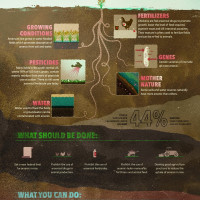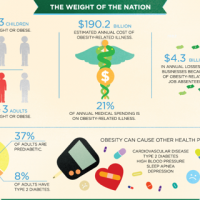USDA dietary guidelines recommend that 50 percent of our daily food intake should be fruits and vegetables. The growing obesity epidemic in the U.S. and it’s impact on the economy and public health, underscores the importance of these recommendations. But there is clearly a disconnect between the guidelines and the mere 2 percent of U.S. farmland actually growing such foods, according to a new report from the Union of Concerned Scientists. The report, Ensuring the Harvest: Crop Insurance and Credit for a Healthy Farm and Food Future, outlines the obstacles for farmers that want to plant fruits and vegetables, and policy changes to remove the. A summary of their recommendations is available here.
The infographic below, “Plant the Plate,” illustrates how American farmers could produce enough fruits and vegetables to meet growing demand, create jobs and support their local economies. They estimate that a $90 million investment in local food (compared to the $5.08 billion in current corn and soybean subsidies) could result in 189,000 jobs and $9.5 billion increased sales of “healthy” food.
[For more graphics that visualize the impact of the farm bill on federal support for healthy food check out Cotton vs. Carrots and Farm Bill of Health.]






